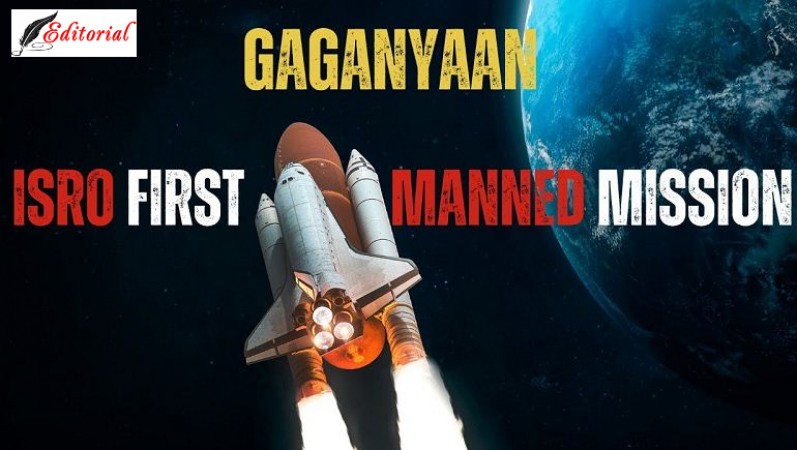
India stands tall on the global stage as it garners increasing attention and admiration for its space missions. The most recent chapter in this saga of success unfolds with the flawlessly executed test launch of India's Gaganyaan mission, aimed at propelling humans into the cosmos.
India's space research endeavors continue to scale new heights, with the Indian Space Research Organization (ISRO) orchestrating feats that fill every Indian heart with pride. The nation's ascent in the field of space exploration is marked by a cost-efficient approach and the adept utilization of indigenous technology, positioning India as a burgeoning hub for space research. Following the historic soft landing on the Moon's South Pole, ISRO's solar exploration mission, Aditya L1, not only took off but also successfully completed a critical orbit adjustment.
The most recent achievement is the flawless test launch of India's Gaganyaan mission, the pivotal step towards human space exploration. This achievement is the result of a crucial test aimed at mitigating potential risks associated with launching astronauts into space. Ensuring the safety of Gaganyaan's future travelers as they hurtle through the cosmos at breakneck speeds necessitates the seamless functioning of the crew module's emergency rescue system. This assurance was realized on a momentous Saturday at the Satish Dhawan Space Center in Sriharikota. Though the journey had its share of technical hiccups initially, the climax was one of sheer exhilaration.
Within minutes of liftoff, the crew module made a gentle descent into the sea. The Test Vehicle D1 (TV-D1) was initially scheduled for an 8 am liftoff, but a minor ignition glitch prompted a five-second countdown halt. The launch eventually took place at 10 am. In just 61.1 seconds post-launch, the module reached an altitude of 16.9 km, separated from the launch vehicle, and safely descended into the Bay of Bengal with the assistance of a parachute. This pivotal test marks the commencement of the first phase of the four-phase Gaganyaan project trials.
Notably, the Gaganyaan project is India's stepping stone toward enabling human space travel to low Earth orbit, laying the foundation for the nation's long-term aspirations in human space exploration. Additionally, Gaganyaan aims to showcase India's technological prowess by embarking on a manned spaceflight mission to low Earth orbit. The government has given the green light to two unmanned missions and one manned mission as part of this ambitious endeavor, with a projected completion date in 2025. The Prime Minister has further kindled our space ambitions by proposing that India establish its own space station by 2035, and even set the audacious goal of an Indian lunar landing by 2040.
Experts believe that the success of the Gaganyaan mission will infuse confidence into further solar system exploration and beyond. ISRO foresees this as the gateway to sustainable growth in human and robotic missions, augmenting technical capabilities and creating opportunities for commercial ventures. Gaganyaan's success will not only be a source of pride in the global arena but also pave the way for India's active participation in global space station development and presenting scientific experiments to the global community.
The mission's wide scope offers promise for employment generation and human resource development in innovative scientific and research and development sectors. Recent achievements by ISRO have ignited the enthusiasm of India's youth, propelling them toward research, knowledge acquisition, and careers in science and technology.
ISRO has aced the primary test with flying colors, and the successful pad abort test of the crew escape system in 2018 bolsters the mission's progress. The Gaganyaan mission, slated to launch with the LVM 3 rocket, is now poised to make India's space dreams take flight with astronauts on board. Salutes are due to all those who contributed to this monumental achievement.